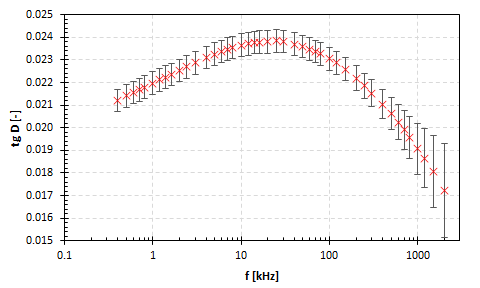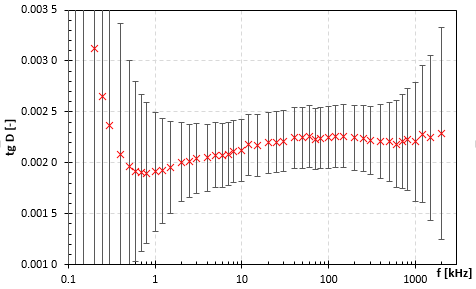 |
I recently decided to build a new Tesla coil. Ideally, with frequency around 1 MHz. That is relatively high and I have a feeling the secondary coil holder tube might heat up because of dielectric losses. Typical material for TC is PVC however, at this frequency, it might not be the best idea. Ideal would be polypropylene (PP), but thin-walled PP pipes are not very common. So I tried to measure loss tangent of PVC samples. The measurement(s) were performed using RLC bridge Keysight 4980A, so they are limited to 2 MHz.
PVC pipes are mixture of several other additives, but I found clear (transparent) one, which should contain minimum additives. My first sample is PVC with wall thickness of 1.8 mm. Measured tgD had strange maximum of 0.024 at 20 kHz, which is not exactly typical shape of frequency dependence, but it's unlikely to be caused by the measurement setup. tgD at 1 MHz is still around 0.020, which is imho a bit too much for TC, so it seems I'll have to look around for something better.
 Fig. 1.1 - Loss tangent of transparent PVC, temperature 23°C, RH 40%.
|
For the next experiment I bought sample of PP pipe from local company kowa.cz. Loss tangent tgD was about order of magnitude lower than PVC, i.e. 0.002 to 0.003 or so. Uncertainty of measurement at low frequencies was high due to poor measurement sample. There was apparently lot of DC loss and it was changing in time a lot. However, that is irrelevant for HF.
 Fig. 2.1 - Loss tangent of PP pipe 34.090.A.0000 from kowa.cz, temperature 23°C, RH 40%.
|
| Last update: 6.8.2023 |  |
 |